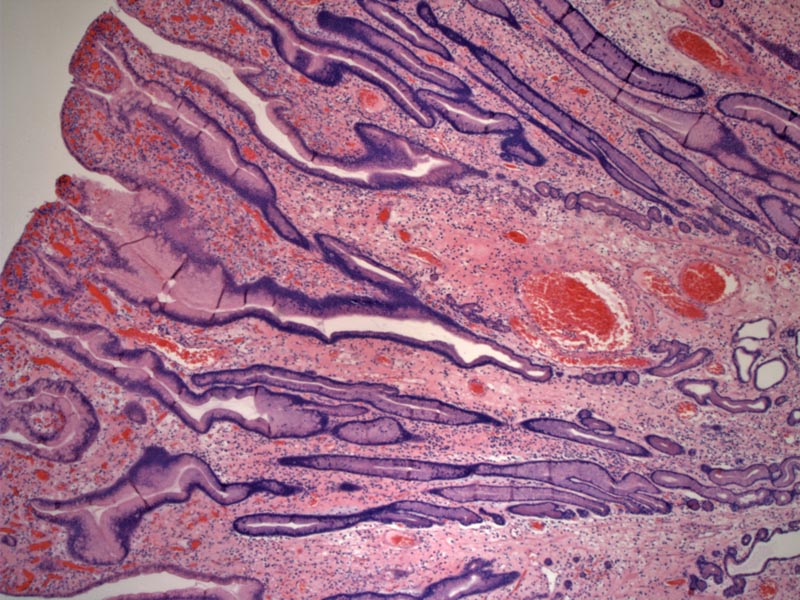

The surface consists of markedly elongated glands with glandular branching.
The cells lining the glands are of foveolae type, compoased of mature gastric mucous cells with abundant cytoplasm. There is also marked stromal edema.
Another feature is that the stroma often contains wispy smooth muscle fibers.
Deeper glands often appear cystically dilated. These deeper glands have an antral type appearance.
The surface of the polyp can get mechanically irritated resulting in superficial telangiectasia and inflammation. Erosion may also occur.
Hyperplastic polyps of the stomach are not uncommon, affecting up to 5% of the adult population undergoing endoscopy. A small percentage harbor dysplasia or carcinoma. They are thought to develop as a response to ongoing injury, as there is frequently (85%) a background pathology such as atrophic or Helicobacter gastritis. Autoimmune gastritis is also strongly associated, in which case the polyps are often multiple. Focal metaplasia is seen in up to 16% (Abraham). In one study, 23% of polyps were multiple (Abraham).
Adults are usually affected, and symptoms may include bleeding, pain, nausea and possibly gastric outlet obstruction (Abraham). Polyps range from 1 cm in size to large lesions that may be mistaken for carcinoma.
The vast majority are benign. If the polyp does harbor carcinoma, it is usually intramucosal and does not carry a bad prognosis.
Often associated with a background of gastritis
Not infrequently multiple
• Stomach : Fundic Gland Polyp
• Stomach : Cronkite-Canada polyps
Abraham SC, Singh VK, Yardley JH, Wu TT. Hyperplastic polyps of the stomach: associations with histologic patterns of gastritis and gastric atrophy. Am J Surg Pathol. 2001 Apr;25(4):500-7.